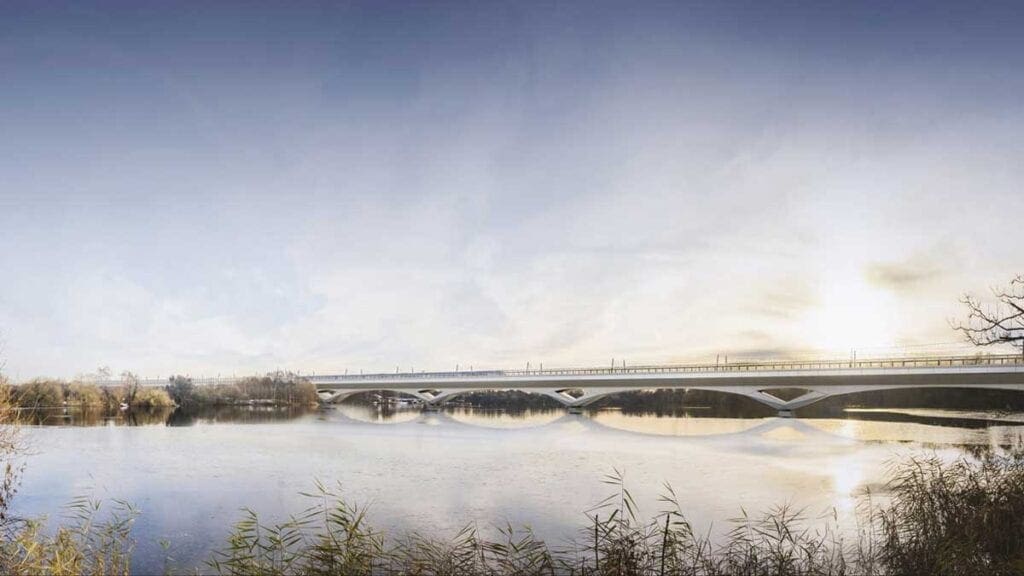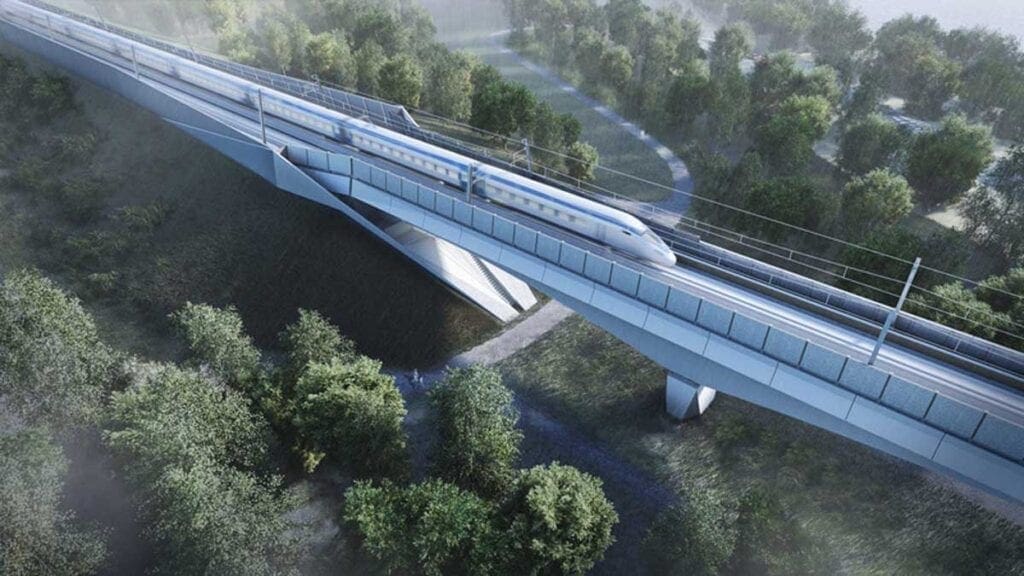
An expert team of ground engineers working for HS2 have begun work on the foundations of the Colne Valley Viaduct.
The engineers will sink 300 piles to form the viaduct, which will carry the new high-speed rail line for 3.4km across a series of lakes and waterways on the north west outskirts of London.
Related articles
- Llangollen Railway: Plea to save Welsh heritage line
- Fears for second spike in rail trespassing when lockdown is lifted
- Go-Ahead defends £6.5m rail profit despite £10bn industry bailout
The bridge will be almost a kilometre longer than the Forth Rail Bridge and carry trains travelling at speeds of up to 200mph.

The structure will be supported by 56 piers, with the widest spans reserved for where the viaduct crosses the lakes, and narrower spans for the approaches.
This design was chosen to enable views across the landscape, minimise the viaduct’s footprint on the lakes and help complement the natural surroundings.
Over the next year, engineers from HS2 Ltd’s main works contractor Align JV – a team made up of Bouygues Travaux Publics, Sir Robert McAlpine, and VolkerFitzpatrick – will construct 292 piles under the ground to support the viaduct piers.
On top of each group of piles – some of which will go up to 55m into the ground – a concrete pile cap will support the pier which will in turn support the full 6,000 tonne weight of the bridge structure above. Instead of hammering the piles into the ground, holes will be bored before being backfilled to create the pile.
The main deck of the viaduct will be built in sections at a temporary factory nearby before being assembled from north to south.
HS2’s ‘most iconic structure’
HS2 Ltd’s Central 1 Project Client Rohan Perin, said: “The Colne Valley Viaduct will be one of HS2’s most iconic structures and it’s great to see work now starting in earnest. I’d like to thank the whole team for the huge amount of work they’ve done to get us to this point.”
Over the last six years, HS2 has worked closely with Affinity Water and the Environment Agency to monitor water quality and agree working methods. These will be monitored by a team of specialist engineers during construction in order to protect the natural environment.
An extensive programme of test piling has already been completed with engineers sinking 12piles at two locations with geological and structural data from these tests fed back into the design of the viaduct. This has resulted in a 10-15% reduction in the depth of the piles and associated time and cost savings.


